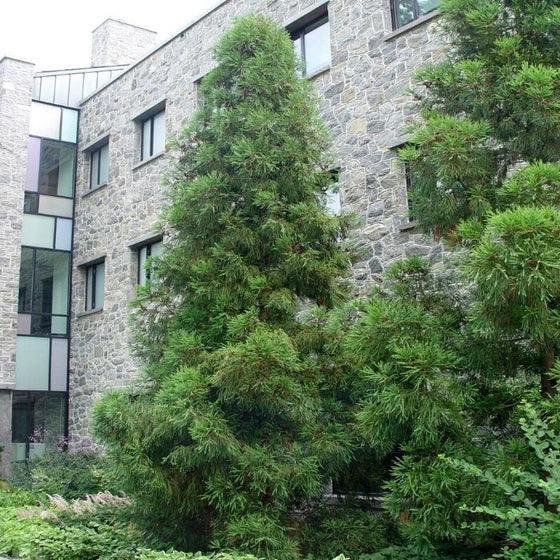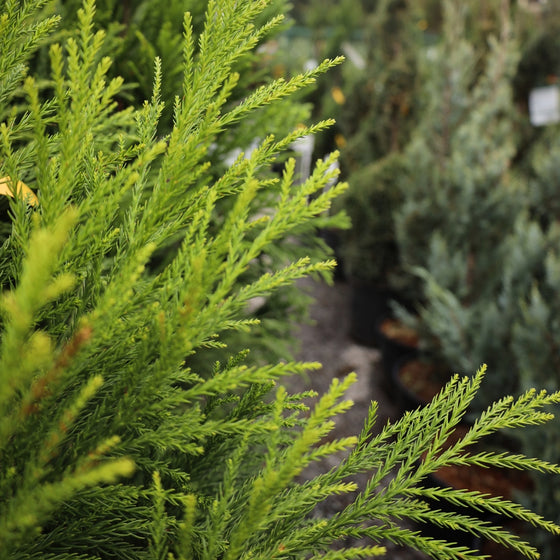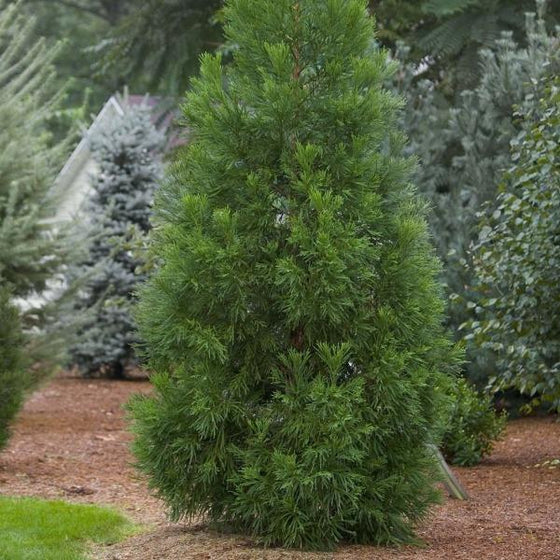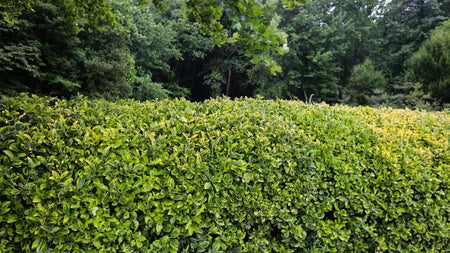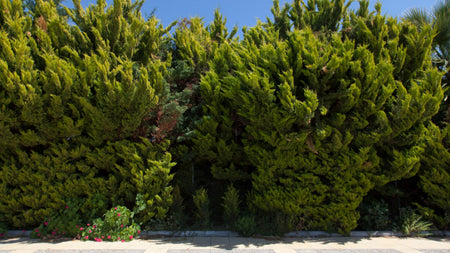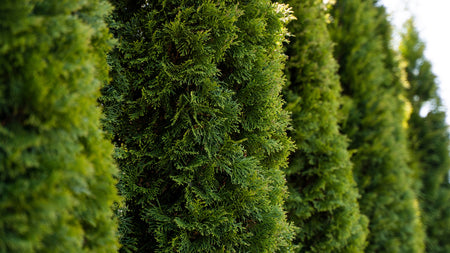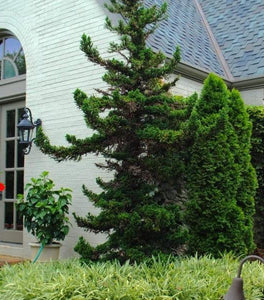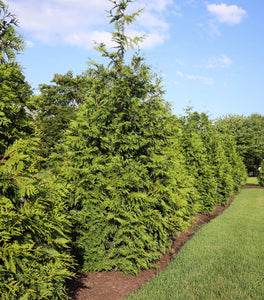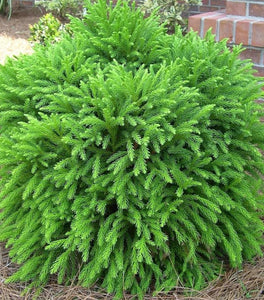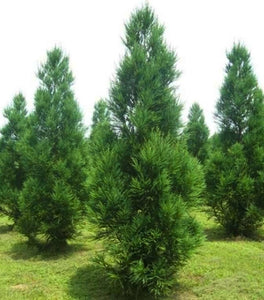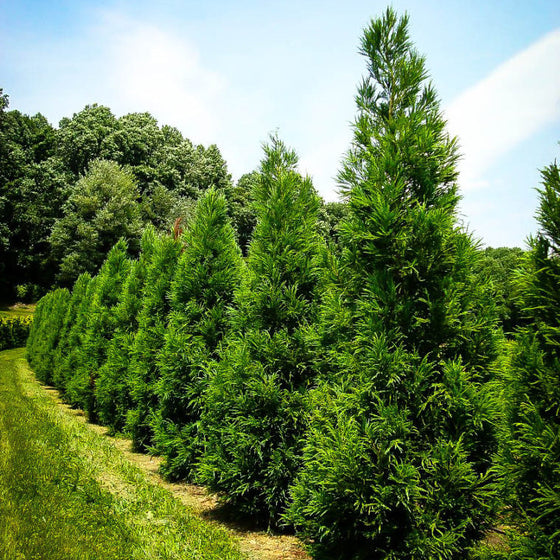
Images Depict Mature Plants
Yoshino Japanese Cedar – Fast-Growing Evergreen Privacy Tree with Soft Green Foliage
A graceful evergreen built for privacy and beauty.
The Yoshino Japanese Cedar (Cryptomeria japonica ‘Yoshino’) is a stunning, fast-growing evergreen that combines soft texture with strong performance. Its lush, feathery foliage and upright pyramidal form make it one of the most elegant privacy trees you can plant. With its ability to grow quickly while maintaining a refined appearance, Yoshino Japanese Cedar brings both function and sophistication to your landscape.
The perfect privacy or windbreak tree.
Growing 30–40 feet tall and 15–20 feet wide, Yoshino forms a dense, symmetrical screen that provides privacy year-round. It grows faster than most evergreens—up to 3 feet per year once established—making it an excellent choice for hedges, property borders, and large-scale windbreaks. Its soft, needle-like foliage stays green through winter, offering reliable color even when other plants go dormant.
Low-maintenance, hardy, and deer-resistant.
Native to Japan, this cold-hardy evergreen thrives in USDA Zones 5–9 and performs beautifully in a range of climates. Once established, Yoshino is drought-tolerant, pest-resistant, and deer-resistant, making it ideal for both suburban and rural gardens. Unlike many conifers, its foliage has a fine, soft texture that’s pleasant to the touch and resists browning through seasonal transitions.
Elegant form, lasting performance.
From privacy screens to specimen trees, Yoshino Japanese Cedar adds a timeless, architectural quality to any landscape. Its combination of fast growth, rich color, and durability has made it one of the most sought-after evergreens for homeowners seeking both practical coverage and ornamental appeal.
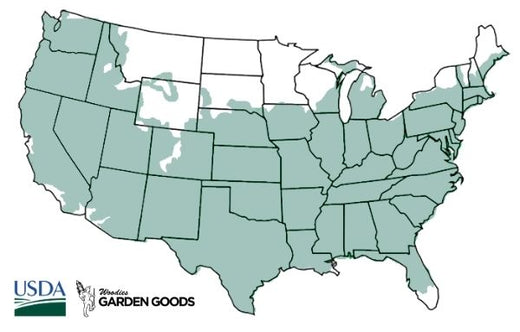
| Hardiness Zone: | 5-9 |
|---|---|
| Mature Height: | 30 to 40 Feet |
| Mature Width: | 15 to 20 Feet |
| Classification: | Evergreen Tree |
| Sunlight: | Full Sun to Part Shade |
| Habit: | Upright, Densely branched, Pyramidal |
| Foliage: | Dark Green |
| Flower Color: | Inconspicuous |
| Pruning Season: | Not Needed |
| Soil Condition: | Any well drained soil to moist soils |
| Water Requirements: | Water well until established |
| Uses: | Use as a Specimen Tree, Windbreak or Privacy Screen |
How to Care for Yoshino Japanese Cedar
Yoshino Japanese CedarBe sure to read our planting instructions to ensure a healthy and happy Cryptomeria Yoshino tree for years to come!
How do I plant a Yoshino Japanese Cedar tree?
Choose a spot with full sun to partial shade and well-drained soil. Dig a hole twice as wide and just as deep as the root ball. Place the tree so the root flare sits level with the ground, backfill halfway, water deeply, then finish filling and water again. Mulch around the base with 2–3 inches of pine bark mulch to retain moisture and moderate soil temperature, keeping the mulch a few inches from the trunk.
How often should I water Yoshino Japanese Cedar?
Water regularly during the first growing season to help establish roots—typically once or twice a week, depending on weather. After the first year, Yoshino Japanese Cedar is fairly drought-tolerant, requiring only occasional watering during extended dry periods. Deep watering is better than frequent shallow watering, as it encourages a robust root system. Consistent moisture during the first two years ensures fast growth and strong establishment.
When and how should I fertilize Yoshino Japanese Cedar?
Feed once a year in early spring using a balanced, slow-release fertilizer formulated for evergreens. Spread it evenly around the base, keeping it several inches away from the trunk. Avoid fertilizing late in the growing season, which can produce tender new growth vulnerable to frost. Mature Yoshino trees typically need only light feeding to stay healthy.

Does Yoshino Japanese Cedar need pruning?
Minimal pruning is needed to maintain its natural, pyramidal shape. Prune in late winter or early spring before new growth begins, removing any dead, damaged, or crossing branches. For hedge plantings, light trimming of the outer edges after the growing season will help maintain uniform density and shape. Avoid heavy pruning into old wood, as new growth may not emerge from bare stems.

